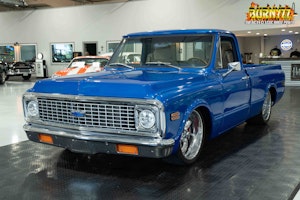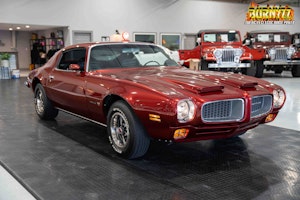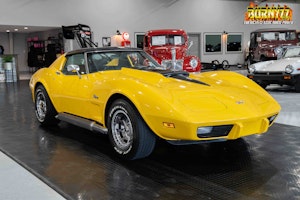Media | Articles
The Henry Ford Museum’s first self-driving car is a Chevy Bolt
The Henry Ford Museum’s “Driving America” exhibit now has its first autonomous car, a modified pre-production Chevy Bolt electric vehicle, donated to the museum by General Motors. It was one of GM’s first autonomous vehicles to be tested on public roads, having racked up about 16,000 miles, mostly on the streets of San Francisco, starting in 2016.
You might think that it’s surprising that an institution named after Henry Ford would be proud of displaying a Chevy, but “Driving America” is one of the world’s preeminent displays on automotive history. Though the Ford Museum has historical ties to the Ford family and Ford Motor Company, Driving America is hardly focused on just Ford vehicles, it is automotively ecumenical. Likewise, the museum and adjacent Greenfield Village are considered cultural treasures by the entire Detroit community, FoMoCo’s crosstown competitors included.
That’s why GM president Mark Reuss presented the autonomous Bolt to the institution at a ceremony at the museum. “The Henry Ford is a treasured institution where past and present innovations are documented and displayed, and GM is proud to provide our autonomous test vehicle to serve as an inspiration to the innovators of tomorrow,” he told gathered media and invited guests.
In accepting the donation on behalf of the museum, Patricia Mooradian, president and CEO of The Henry Ford , said, “Self-driving capabilities will fundamentally change our relationship with the automobile. As the home of the historic vehicles that have shaped that relationship today, this acquisition is paramount in how we tell that story in the future.”
Marketplace
Buy and sell classics with confidence
20190314182339)
GM developed the self-driving Bolt with its San Francisco-based subsidiary Cruise Automation, which makes software for autonomous vehicles. General Motors bought the software developer in 2016. The autonomous electric vehicle has multiple video cameras, radar and LIDAR sensors, and a dedicated computer to collect data from those sources and drive the car. It has a 360-degree view of the world around it and can make driving decisions in “near real-time.” GM and Cruise Automation are currently developing the Cruise AV, a production-ready fully autonomous car that will have no manual controls.
Another thing that might surprise you is that autonomous cars are not a new idea. Serious experiments date back to the 1920s. GM’s Futurama exhibit at the 1939 New York World’s Fair portrayed a future with cars guided by radio waves and propelled by electromagnets buried on automated highways. In the 1950s, working with RCA, GM built a private test road with wires embedded in the roadway that guided the cars. RCA Labs demonstrated a similar system on a public road near Lincoln, Nebraska, in 1958.
All of GM’s famous turbine-powered Firebird show cars of the 1950s and 1960s were claimed to have an electronic guide system for use on automatic highways and the Firebird II has receivers to detect control devices embedded in roadways.
After the ceremony, the Ford Museum put its first self-driving Bolt in a place of honor, near the entrance of the Driving America exhibit right next to the museum’s 1959 Cadillac Eldorado. Matt Anderson, the museum’s curator of things automotive, said that it won’t be the museum’s last self-driving car.











20190314182317)
20190314182328)

